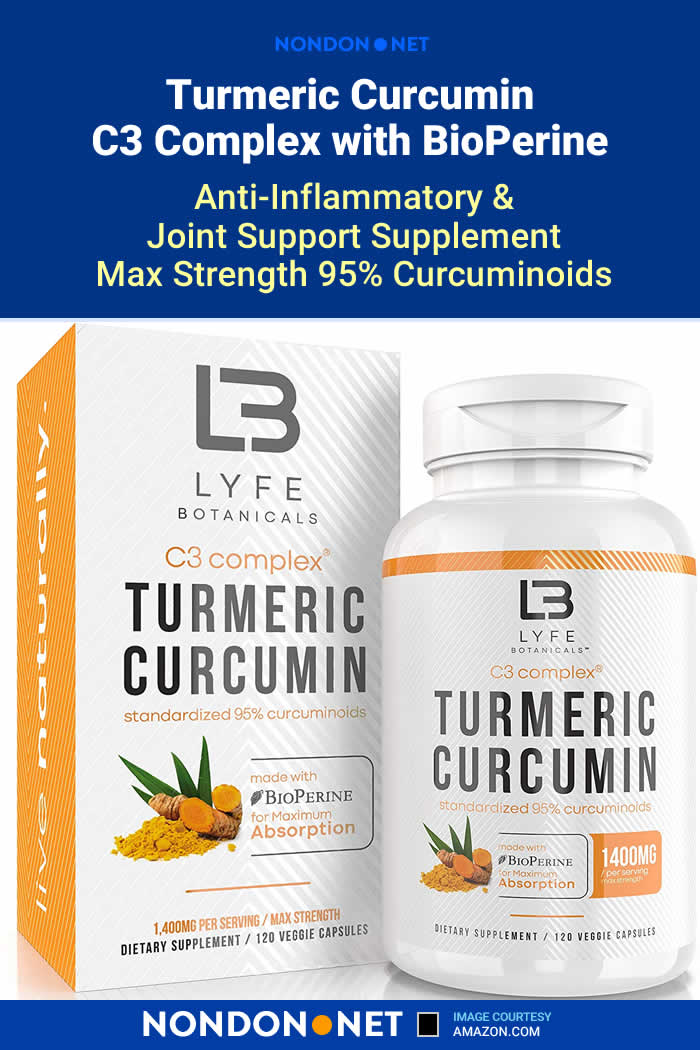
Turmeric for Headaches? In this article, we’ll discuss the efficacy of using turmeric for headaches, and whether or not it can help reduce the pain and discomfort of migraines.
In the modern world, people are increasingly looking for natural remedies for common health problems. Ayurveda is a branch of natural medicine that focuses on using herbal remedies for common ailments.
Perhaps the most popular holistic healing herb is turmeric and its constituent, curcumin.
Turmeric, extracted from Curcuma longa root, is a species of ginger originating in India and Southeast Asia.
This yellow spice boasts a long history of flavoring Asian cuisines and appearing in dietary supplements. Turmeric benefits the body in many ways, but does it help headaches and migraines?
List of the Sections
Turmeric for Headaches
Turmeric has proven itself useful in dealing with many common problems. A daily supplement can help reduce sciatica pain, prevent yeast infections, and treat cold and flu symptoms. Curcumin even provides benefits for skin and brain health.
Recent research suggests that turmeric may be able to help migraine and headache relief in specific individuals.
Since curcuminoids exhibit potent antioxidant and anti-inflammatory activity, experts believe they may have a useful application in treating headaches.
Before we look at the studies, let’s discuss the difference between headaches and migraines, and their causes, in a bit more detail.
What Causes Headaches & Migraines?
A headache is a painful sensation capable of affecting any part of the head. It can be a sharp or dull discomfort that often co-occurs with other symptoms. Deciding on the best way to treat a headache depends on the cause.
Known causes of headaches and migraines
more from
migraine
This list is just a high-level overview of possible factors. Believe it or not, there are many different types of headaches, and their causes aren’t always obvious.
Thus, it’s essential to know the source of your headache before attempting to treat it. Source: medicalnewstoday
Two main classifications of headaches
Primary:
Not derived from an underlying health condition. Instead, primary headaches are usually indicators of structural issues with the head and neck. If one uses medication to treat the pain too often, we classify this as a medication overuse headache.
Secondary:
Results from an underlying condition such as hypothyroidism or allergies. Addressing these issues usually provides headache relief. These headaches may point to serious health problems and often come with other symptoms like sensory changes, a stiff neck, fever, or confusion.
Headaches are also either episodic or chronic
Headaches are also either episodic or chronic, based on their duration and frequency of occurrence.
Episodic:
These may only develop once in a while, usually lasting half an hour to an hour. There may not be a real pattern to when episodic headaches appear.
Chronic:
This refers to a pattern of consistent headaches that appear frequently, and can sometimes last for days at a time. Pain management is important when dealing with chronic headaches.
The last portion will discuss the most common types of headaches people experience. These three types are pervasive throughout the world and benefit greatly from natural pain management therapies like turmeric and curcumin.
Most common types of Primary Headaches
- Migraines: Involves throbbing, pulsating, or debilitating pain, often occurring on one side of the head. You may feel lightheaded and experience sensitivity to sound and light or other sensory disturbances. During severe migraines, nausea and vomiting are possible.
- Tension: This common type of headache develops gradually in the middle of the day. Tension headaches bring about a dull aching pain that spreads from the neck to both sides of the head.
- Cluster: Characterized by severe piercing or burning pain, cluster headaches occur around one eye or one side of the face. These headaches arise in a series, with each one lasting anywhere from 15 minutes to three hours, several times per day, for 4-12 weeks. (2)
Why Turmeric Curcumin?
Evidence suggests that turmeric helps with many illnesses related to mental health, including Alzheimer’s and Parkinson’s disease.
Curcumin also seems to regulate several underlying conditions that lead to secondary headaches, such as stress, hypothyroidism, hypertension, and allergies.
The curcuminoids within turmeric have demonstrated an innate ability to boost the immune system response and reduce inflammation and swelling. These key attributes are vital for combating headaches and migraines.
Turmeric for Migraines: Is Curcumin Good for Headaches?

A migraine is a neuroinflammatory disorder instigated by cyclooxygenase-2 (COX-2) and nitric oxide synthase (iNOS). These two enzymes contribute to neurogenic pain and inflammation in the CNS (central nervous system).
One study used curcumin, along with omega-3 fatty acids, to test their effects on migraine prevention. Previous research has shown that turmeric and omega-3 can suppress COX-2 and iNOS gene expression.
The study evaluated 74 episodic migraine patients over a 2-month treatment period using curcumin, omega-3, a combination of the two, and a placebo group.
The results showed that a combination of curcumin and omega-3 had a compounding effect in the downregulation of COX-2/iNOS. The subjects experienced significantly reduced severity, duration, and frequency of headaches. (3)
Researchers are still trying to understand the pathogenesis of migraines and headaches. Studies show that vasodilatation due to neurogenic inflammation may contribute to migraine development. Vasodilatation is blood vessel enlargement, which decreases systemic blood pressure. (4, 5)
Since nitric oxide (NO) is a potent vasodilator, turmeric and curcumin’s ability to suppress its production has shown promise in the treatment of headaches and migraine attacks. Our next study assessed curcumin’s antioxidative stress effects on Nitroglycerin (NTG) induced migraines in 5 groups of 10 rats.
more from
Turmeric
The results of the trial showed that using curcumin as a pretreatment for migraine relief was superior in its performance when compared to the control group.
This study implies that a daily turmeric dosage can be an effective natural pain management plan for preventing chronic and episodic headaches. (6)
Additional research suggests that turmeric improves DHA (docosahexaenoic acid) production in the brain. DHA is an essential omega-3 fatty acid that is crucial for brain development. As we’ve seen above, DHA can also help reduce neuroinflammation and downregulate nitric oxide. (7)
Besides the inhibition of nitric oxide synthesis for migraine prevention, curcumin can help with secondary headaches derived from underlying conditions, as well.
Studies show that turmeric can improve vascular endothelial function if you get headaches resulting from hypertension.
This benefit helps regulate systolic blood pressure, improve circulation, and lower vascular resistance in both older and younger populations. (8)
Sometimes depression and anxiety or excessive stress can lead to headaches. Researchers have discovered that depression is associated with chronic low-grade inflammation, which curcumin is proven to help. (9)
Allergies can also contribute to chronic and episodic headaches. Several studies have shown that turmeric has antiallergic properties. Thus, it behaves like an antihistamine within the body. This attribute is beneficial if you’re predisposed to seasonal allergies and its adverse symptoms. (10)
There is a considerable amount of proof demonstrating the potent anti-inflammatory and antioxidant properties of turmeric with very few side effects.
Curcumin mediates the inflammatory processes through several vital enzymes, which help lower neuroinflammation and oxidative stress throughout the body. (11)
Final Thoughts on Turmeric for Headaches and Migraines
Is turmeric good for headaches? The answer appears to be yes. Curcumin has shown that it can inhibit nitric oxide production, enhance DHA synthesis, and reduce neuroinflammation. These benefits make it useful in the prevention and treatment of migraines.
Turmeric also improves underlying health conditions linked to secondary headaches. For best results, select a supplement that contains both turmeric and BioPerine for improved absorption and maximum headache relief.
As always, make sure to discuss using turmeric, or any dietary supplement, with your primary care physician to see if it will help with your current situation.









































